Photos: Students Use NASA Satellite to Study Mars
Mars Student Imaging Project Participants
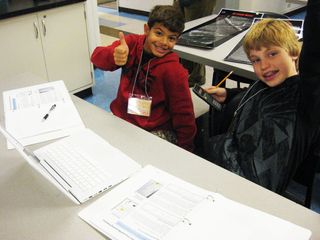
The Mars Student Imaging Project allows students in middle school, as well as in high school and college, to break ground on new science projects of their own selection by using the THEMIS instrument on NASA's Mars Odyssey orbiter.
Valles Marineris on Mars
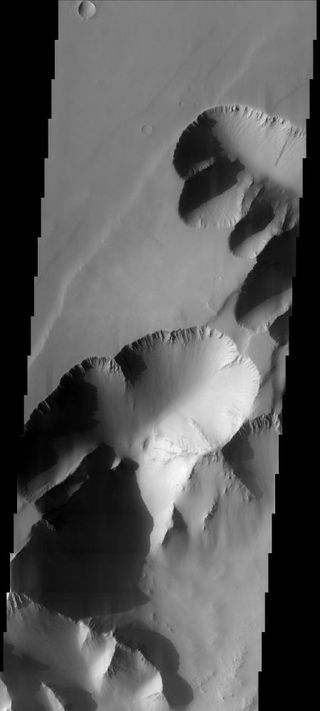
Valles Marineris stretches across the planet for more than 2,500 miles (4,000 kilometers). Laying just south of the equator, it is about ten times as long and wide and three times as deep as Earth's Grand Canyon. Students researched the characteristics of landslides across the rift system.
Volcanoes Cross the Martian Surface
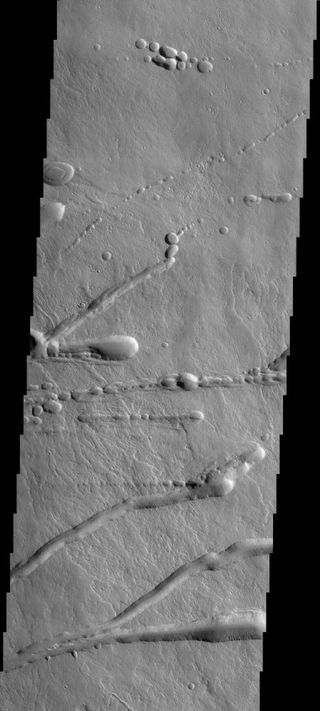
Volcanoes cross the Martian surface. Students compared erosional features on the flanks of several of these features.
Space Bombardment of Mars
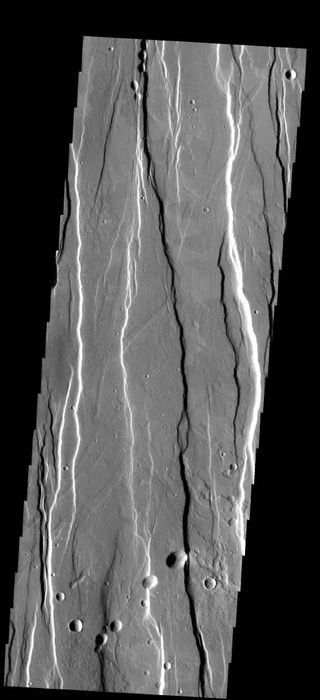
Evidence of bombardment from space litters the Martian surface. Students studied and compared ejecta from craters found on lava flows to those located in nonvolcanic areas.
Martian Dust Storms
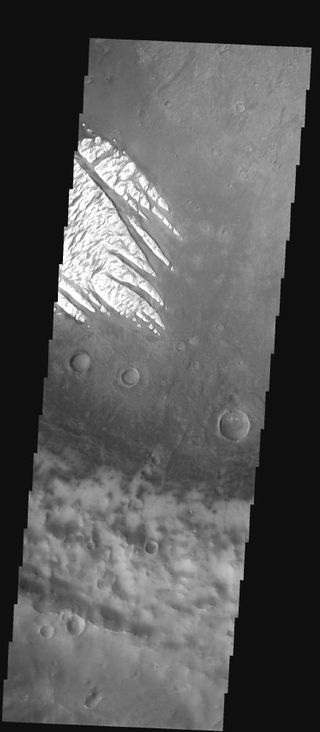
Dust storms blowing across Mars can stir things up. Such storms can take months to settle, covering rocks which may be exposed by the next squall. Students studied the effect of wind erosion on objects exhumed by such storms.
Windstreaks on Mars
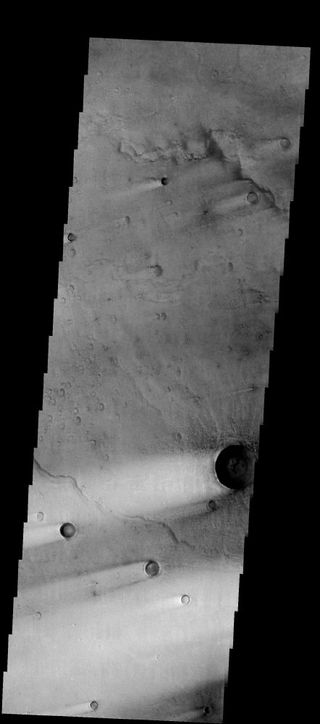
Wind on Mars can reach speeds of up to 60 miles (97 kilometers) per hour. As the wind interacts with features such as craters, they can deposited or eroded debris. The newly created windstreaks can indicate which way the wind was blowing at their birth.
Splosh Craters on Mars
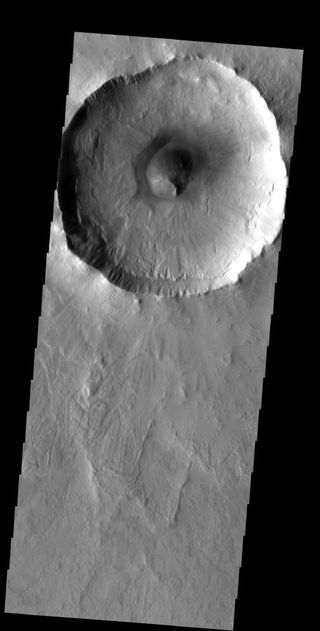
Scientists think smooth-edged splosh craters form when large rocks crashed into water-rich parts of the Martian crust. The smooth edge created by the ejected material indicate that the surface behaved more like mud than dirt or rock. One student project studied the frequency of splosh craters near the Martian poles.
Get the Space.com Newsletter
Breaking space news, the latest updates on rocket launches, skywatching events and more!
Channels Crossing the Surface of Mars
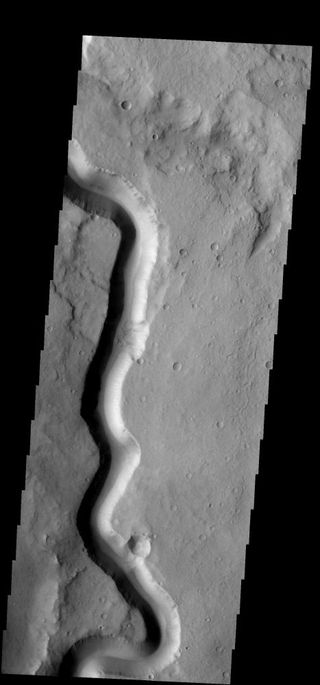
Channels crisscross the surface of Mars. Some may have been cut by flowing water in the planet's past, but others were carved by slow-moving lava. Students studied whether simple channels varied in depth.
Sand Dunes on Mars
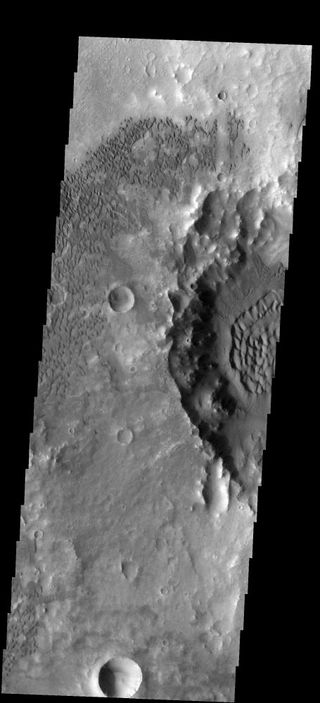
Students examined sand dunes on the craters of Mars to determine whether they might cover other pre-existing features on the crater floors. Large, dark, hard-to-shift grains make up Martian sand dunes, and require heavier winds to move them than the dust that constantly blows across the planet's surface.
Mars Canyon Systems
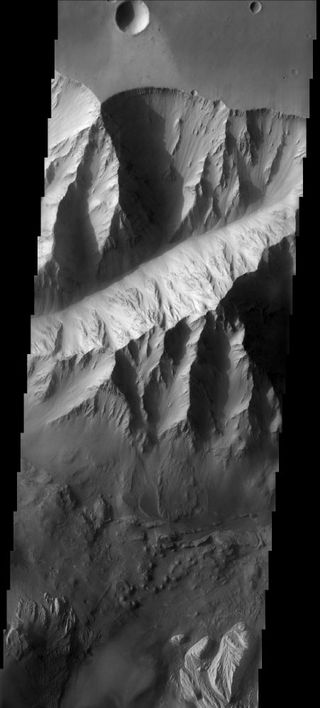
Canyon systems crisscross the surface of Mars. Students examined some of these features in search of evidence that might indicate whether they formed by water or by other means.
Mars Fracture Patterns
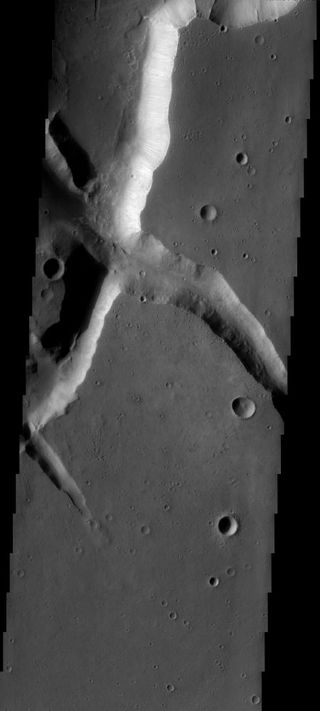
Fracture patterns on a planet's surface can form by the movement of tectonic plates, weathering, changes in temperature caused by ice and lava, or by the cracking of material as it dries. One student project researched several fracture patterns on the red planet.
Join our Space Forums to keep talking space on the latest missions, night sky and more! And if you have a news tip, correction or comment, let us know at: community@space.com.

Nola Taylor Tillman is a contributing writer for Space.com. She loves all things space and astronomy-related, and enjoys the opportunity to learn more. She has a Bachelor’s degree in English and Astrophysics from Agnes Scott college and served as an intern at Sky & Telescope magazine. In her free time, she homeschools her four children. Follow her on Twitter at @NolaTRedd